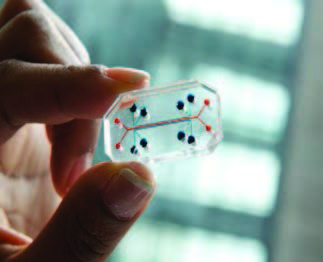
WASHINGTON (TIP): A Harvard researcher has developed a ‘bone marrow on a chip’ that can help study the harmful effects of radiation on humans.
“It’s unethical to expose humans to the kind of radiation that you’d see in a disaster like Fukushima, but you need to be prepared,” said Donald Ingber, a bioengineer at Harvard University’s Wyss Institute in Boston, Massachusetts.
With support from the US Food and Drug Administration, he is adapting his ‘bone marrow on a chip’ to study the effects of harmful radiation and experimental remedies.
Other researchers working along similar lines have presented their work on model organs for biodefence applications recently at a meeting of the American Society for Microbiology (ASM) in Washington DC.
The hope is that these complex three-dimensional systems will mimic human physiology better than cells grown in a dish, or even animals, ‘Nature.com’ reported.
A common way to form a model organ is to seed cells into channels in a small plastic chip and then feed them with nutrient-rich fluid that flows through the system to mimic blood.
The devices can be used individually or connected to other types of organs-on-chips to approximate a biological system, or perhaps an entire human body. At the ASM meeting, microbiologist Joshua Powell of the Pacific Northwest National Laboratory in Richland, Washington, presented experiments testing the ability of anthrax spores to infect a three-dimensional ‘lung’ grown from rabbit lung cells Powell said that the US Department of Homeland Security is interested in using the system to answer questions such as how many anthrax spores are necessary to cause disease in the body.
For some viruses in particular, Ingber said, researchers have no idea about the mechanism, and they need the mechanism to get new drug targets.
Infecting model organs could allow researchers to watch how gene expression and metabolism change in real time.
This sort of information could also be used to identify an unknown agent during a chemical, biological or radiological attack, by providing baseline data on known agents for comparison. Researchers have already developed dozens of individual model organs; the next challenge is to hook them together with the eventual goal of forming an entire human body on a chip, said Kristin Fabre, a programme manager at the National Center for Advancing Translational Sciences (NCATS) in Bethesda, Maryland.
An NCATS-funded project has 11 research teams participating to hook together at least 4 chips.
The US Department of Defense’s Defense Advanced Research Projects Agency (DARPA) is supporting the development of techniques to link ten organs, and its Defense Threat Reduction Agency aims to build two four-organ systems.





Be the first to comment